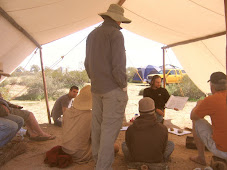Okay, let's add some more notes to parts 5 through 9 of of the saga.
Part 5, Monastyrsky and Kwasniewski: The most important lesson I learned from this time period was that the heaviness in my body was directly related to being constipated 24/7, and that there were ways to restore my intestinal motility. I highly recommend Monastyrsky's book, Fiber Menace
Part 6, It's All Digestive My Dear Watson: Damn, I wish I could eat all the fat I wanted without having gut issues. Maybe someday I'll be able to if I ever resolve things completely. Until then, I have to actually keep fat consumption at moderate to low levels because I get the same symptoms as I described in this post: the bad breath, the muscle tension, the bloating, the insomnia. All of these things I believe are related to the slow motility of my intestines. And I discovered this by thoroughly observing my body's response to eating food. This is a fine art, and it requires an understanding of just how food travels through the body.
I have found through talking with others that the one place many folks get tripped up in evaluating their own bodies' digestive capacity is not knowing their symptoms connect with very specific parts of the GI tract. For example, I have heard many people complain about "feeling full" after a meal, and they'll often say that their "stomach is full." Yet, when I see where their hands go to describe this fullness, I realize it is not their stomach that is full at all -- it is actually their lower abdomen that is bloated and uncomfortable. The stomach, of course, is just below the sternum a little to the left -- not around the belly button. So this "fullness" is most likely coming from the last part of the small intestines. This region is probably bloated from some kind of dysfunction and is putting pressure on the GI tract above it, including the stomach -- which gives the sensation of having eaten too much. Knowing about little things like this can help a person really narrow down and target their specific digestive ailments.
Part 7, The Holy Grail of Probiotics ... Part 8, A Fecal Transplant Story ... Part 9, The Long Journey of Mister Poop: I'm covering all of these parts together because they fall under the same general category: taking someone else's poo and putting it in my body to restore intestinal flora. There are many things that I would do differently now if I did the procedure again -- possibly antibiotics before the implant; better donor selection; make a more palatable concoction and pinch my nose (!) while drinking. I'll outline my plan in more detail in an upcoming blog post. For now, I will say that I have not ruled out this procedure and still have great hope for its use in the near future.
I believe very deeply that this is the ultimate tool in regaining digestive health and it deserves far more attention and research than it is currently getting. However, word is definitely getting out, and I'm encouraged by some of the latest coverage of the treatment. Here's a list of very recent and active links that I've found regarding fecal transplants:
Freakanomics Radio: The Power of Poop -- A good primer for potential donors on the merits of the procedure. And it's entertaining.
Fecal Transplant - I Took the Plunge! -- On the "Healing Well" forum. Exhaustive 5-part resource on individual experiences and questions regarding the treatment.
Home Fecal Transplants -- A group of people attempting transplants. Some are beginning to consider doing an oral transplant similar to the one I did.
How Are Things Now?
I am currently fairly stable in my gut as long as I follow certain rules that seem to work for me:
1) Low fiber diet: in addition to meat, butter, cheese, etc., I eat white rice or peeled potatoes for my starches and occasional bowls of homemade ice cream (with unrefined sugar).
2) No gluten: this without a doubt keeps my GI tract stable and happy.
3) Magnesium supplementation
4) Pancreatic enzymes
5) Moderate to low protein and fat: if I don't gorge on meat and fat (as much as I want to), things remain stable.
6) Two meals a day: this gives my digestive tract time to rest and be free of symptoms, and it appears to allow me to sleep through most of the night without intestinal disturbances.
7) Chewing fennel seeds
When following these guidelines consistently, I find that my bloating is very minimal, my muscles have very little tension, and my mind is clear and focused. Overall, I just have more energy.
This Is (Not) the End, My Friend
Well, here we are at the finish of my intestinal saga -- at least for now. There will certainly be more updates in the future as I continue to discover more and more about my condition. I still have a great amount of curiosity in exploring the mystery that is my GI tract, and only time will tell what kinds of crazy treatments I might stumble upon. One thing all of you out there in blogger land can be sure of is this: you will hear about it. Thanks for reading -- and happy digesting!
.




